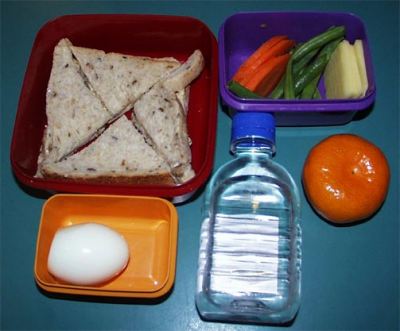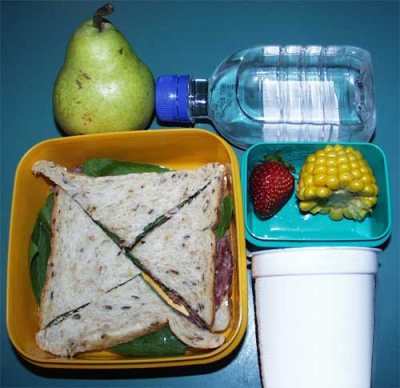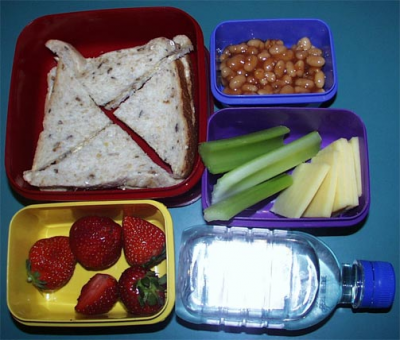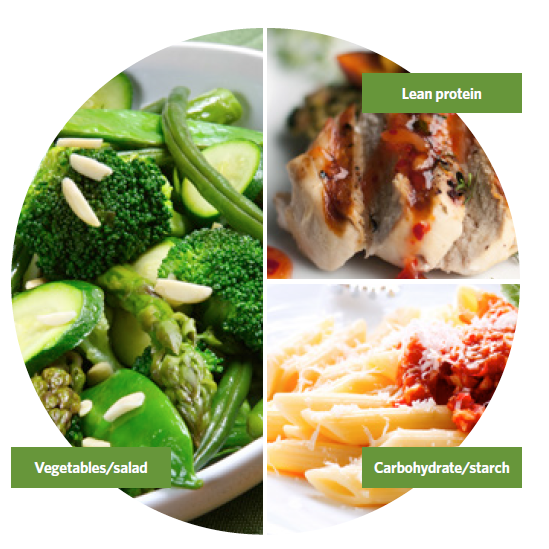Dietitians are university qualified specialists in the area of nutrition and its role in health and disease. The dietitians at the Royal Children's Hospital are available to consult on all aspects of infant and child nutrition including assessment, recommendations for dietary intervention
and monitoring of progress.
A referral to a dietitian who can help guide you and your child through healthy and safe weight management strategies is a great first step. As with many hospital-based services there may be a waiting period to see the RCH Weight Management Service. If this is the case, access to a community
or private dietitian can be obtained by requesting a referral from your GP. Most services will be covered by Medicare or accessed at a small fee.
Below are some helpful tips of diet and lifestyle changes your family can make to get started on your weight management journey.
Thinking ahead and planning your meals and snacks will ensure your child's diet is healthy. Being organised will help to limit intake of high-energy junk foods, which are usually very high in fat and sugar, and result in unnecessary weight gain. In addition, junk foods and pre-packaged foods tend to provide fewer vitamins and minerals, and are often more expensive than healthy meals and snacks made from scratch. Getting organised and preparing meals and snacks at home will help your child get all the nutrients they need to thrive and will save you money at the same time!
| Tips for getting organised |
| 1. Know your pantry and plan ahead — be aware of what food you have at home and plan healthy meals for up to a week at a time. This will save you time and money by avoiding a visit to the supermarket or the local take-away shop on your way home. |
| 2. Choose a shopping day and take a shopping list with you. |
| 3. Don’t shop on an empty stomach! This will increase the chances of buying unhealthy snacks and meals. |
| 4. Prepare for the unexpected — life gets busy and there will be times where it is impossible to cook a healthy meal from scratch but buying take-away isn’t the only solution. Preparing meals in advance and freezing them will give you a quick and simple solution to this common problem. Just reheat and serve. |
| 5. Pack school lunches the night before to avoid the temptation of grabbing high energy/calorie pre-packaged snack foods as you’re running out of the front door. |
The key to achieving a healthy weight is not to eat less but to eat smart. Depriving your body of meals will only make it hungrier and increase the chance of overeating at other meal times. Aim for three meals (breakfast, lunch and dinner) with regular snacks in-between if you are hungry. Sitting at the dining table as a family for most meals has been shown to reduce the risk of obesity. Children who engage in family meal times tend to have a higher consumption of fruit and vegetables, improved socialisation and better psychological health. It is important to remember to turn off all distractions like TVs and tablets during the family meal to make it a pleasant social environment that encourages healthy eating.
Am I hungry?
We all eat food for different reasons – not just because we need it for energy. Sometimes people will eat to appetite rather than hunger, meaning that they are eating a food because they enjoy the taste but don’t necessarily feel hungry. Other reasons for “mindless” or “non-hungry” eating can include fatigue, boredom, procrastination, distraction and comfort eating when feeling anxious or depressed.
The division of responsibility
The parent is responsible for the foods that are offered to children and the children are responsible for how much they eat.
Sometimes non-hungry eating becomes a habit out of wanting to eat the food that we enjoy the taste of, even if we don’t feel hungry. To manage this it is important for parents to consider the ‘what’, ‘when’ and ‘where’ of food. This is often referred to as the division of responsibility.
The parent decides
- What to offer – healthy foods in age appropriate portions
- When – aim for regular meals and snacks, avoid grazing throughout the day
- Where – in an environment that is supportive of mindful eating, e.g. at the kitchen table, not on the couch in front of the television
The child decides
- If – they are going to eat
- How much – they are going to eat of the age appropriate portion that is served
Tips to avoid non-hungry eating
- If your child is asking for a second serving offer them a big glass of water first. If they are still hungry after 15 minutes offer them a healthy snacks
- Follow the division of responsibility (above) – if they do not want the healthy meal/snack that you have offered, they are not hungry. Resist offering them alternatives.
- If they are asking for food out of boredom redirect them to other activities
- If you suspect they are looking to food for comfort help them talk through their worries
- Have a visual mealtime routine so the kids know what time their next meal or snack will be.
Healthy school lunches don’t have to be boring. Aim for a ‘nude food lunch box’ where the school lunch is free from processed or pre-packaged foods.
Get back to basics
In your child’s lunchbox aim to include a sandwich or a wrap, a piece of fruit, a vegetable snack and a tub of yoghurt or a slice of cheese.



Portion size is just as important as the type of food we eat. There is such a thing as ‘too much of a good thing’. Portion sizes should be appropriate for your child’s age. An easy way to work towards healthier portions is to use the healthy eating plate guide in conjunction with the portion size table below.

| Example |
Portion |
| Protein |
Meat (beef, lamb, chicken, fish eggs etc.) |
The size of the palm of your hand |
| Carbohydrate |
Rice, pasta, bread, potato |
The size of your fist |
| Vegetables |
Capsicum, zucchini, cauliflower, broccoli, lettuce, tomato, cucumber, pumpkin, asparagus, carrot, swede, green beans, cabbage, celery, spinach, and much more! |
Unlimited if they are steamed, boiled or raw |
It is OK for children to leave food on their plate. Forcing children to finish their meal overrides their hunger and satiety (feeling of fullness) cues and encourages overeating to become habit. Left overs can be stored in the fridge and reheated for another meal or snack to avoid food wastage.
Sugar-sweetened drinks include soft drinks, fruit juices, flavoured mineral water, nutrient water, cordial, sports drinks and flavoured milks. They add unnecessary energy to your child’s diet which may lead to unwanted weight gain. In addition some of these drinks can increase the risk of tooth decay and offer little or no health benefit as they contain no vitamins or minerals to assist with healthy growth. Switching these drinks to water will keep your child well hydrated and assist with managing their weight.
Be careful!
Milk is a nourishing drink and a rich source of calcium but you can have too much of a good thing. Low fat dairy in the form of milk (plain, unflavoured), cheese and yoghurt is recommended as a part of a healthy diet for all children over the age of two years. Seek advice from your dietitian as to how much dairy is enough for your child.
Including physical activity in your daily routine will not only help your child achieve a healthy weight but will also assist in improving their mood.
Why is exercise/activity important?
- It aids healthy growth and development
- Assists in achieving and maintaining a healthy weight when combined with healthy eating
- Distracts from eating
- Improves general health
- Builds strong muscles and bones
- Provides opportunities to interact with other children/adolescents
- Helps to develop good motor skills and flexibility
- Improves self esteem
- Helps aid relaxation
- Improves sleep and schoolwork
How much exercise does your child need to do?
All children are different and exercise requirements are influenced by many different factors such as the age of the child. When we talk about exercise we mean how physically active a person is.
Current recommendations for physical activity
| Age |
Time |
Type |
| Birth to one year |
N/A |
Supervised floor play |
| 1 to 2 years |
Three hours per day |
Active play |
| 3 to 5 years |
Three hours per day |
Active play with at least 60 minutes of energetic play such as running, jumping, kicking and throwing
|
| 5 to 17 years |
One hour or more per day
|
Moderate to vigorous physical activity involving mainly aerobic activities each day
Activities that are vigorous, as well as those that strengthen muscle and bone should be incorporated at least 3 days per week
|
| |
Several hours per day |
Light physical activity |
| 18+ years |
2.5+ hours per week
|
Moderate to vigorous physical activity
|
Physical activity should be part of a daily routine for every child and adolescent. In the first instance this may need to be encouraged — find out what activity interests your child/adolescent and remember any activity is good activity.
When implementing activity it is important to find something that your child finds fun as this will be beneficial and much more sustainable.
Tips and tricks to encourage exercise
- All activity is more fun when done with someone else.
- Active parents mean active kids - be a good role model, participate and be active with the child/adolescent.
- Limit screen time to less than 2 hours a day and have alternative active play ideas ready.
- Encourage active ways of getting to and from school — walk, ride or scooter all or part of the way.
- Encourage gifts that promote activity e.g. cricket sets, balls, skateboards etc.
- Set up activities that can be done at home — such as circuits, including stations for star jumps, skipping, throwing a ball etc.
- Where possible get involved in organised team sports – not only does this encourage interaction between kids and families to improve social skills, it is also a commitment
To find more information on a sport that interests your child visit
Sport and Recreation Victoria
Our reliance on electronics has meant that Australian’s are less active than ever before. This is contributing to 70% of Australian adults being overweight or obese. Limiting screen time encourages physical activity and exercise. Screen time includes anything that glows in the dark - computers, tablets, phones, portable gaming devices (Nintendo DS) and television (watching programs, or gaming using Play Station, Wii etc.).
Maximum screen time recommendations
(eg. TV, computer games, mobile phone or iPad)
| Age |
Time |
| Less than 2 years |
No screen time |
| 2 to 5 years |
One hour per day |
| 5 to 12 years |
Two hours per day |
| 13 - 17 years |
Two hours per day |
| 18+ years |
Minimise the amount of time spend in prolonged sitting |
Dietitians manage and treat patients of all ages with a wide variety of nutrition concerns. When looking for the right dietitian for your child/family it is important to know if they have the right experience and skills to address your needs and concerns.
**Don’t forget to ask your GP if your child qualifies for a Medicare Benefits Schedule Chronic Disease Management Plan which will enable them to have regular subsidised visits with an allied health team.